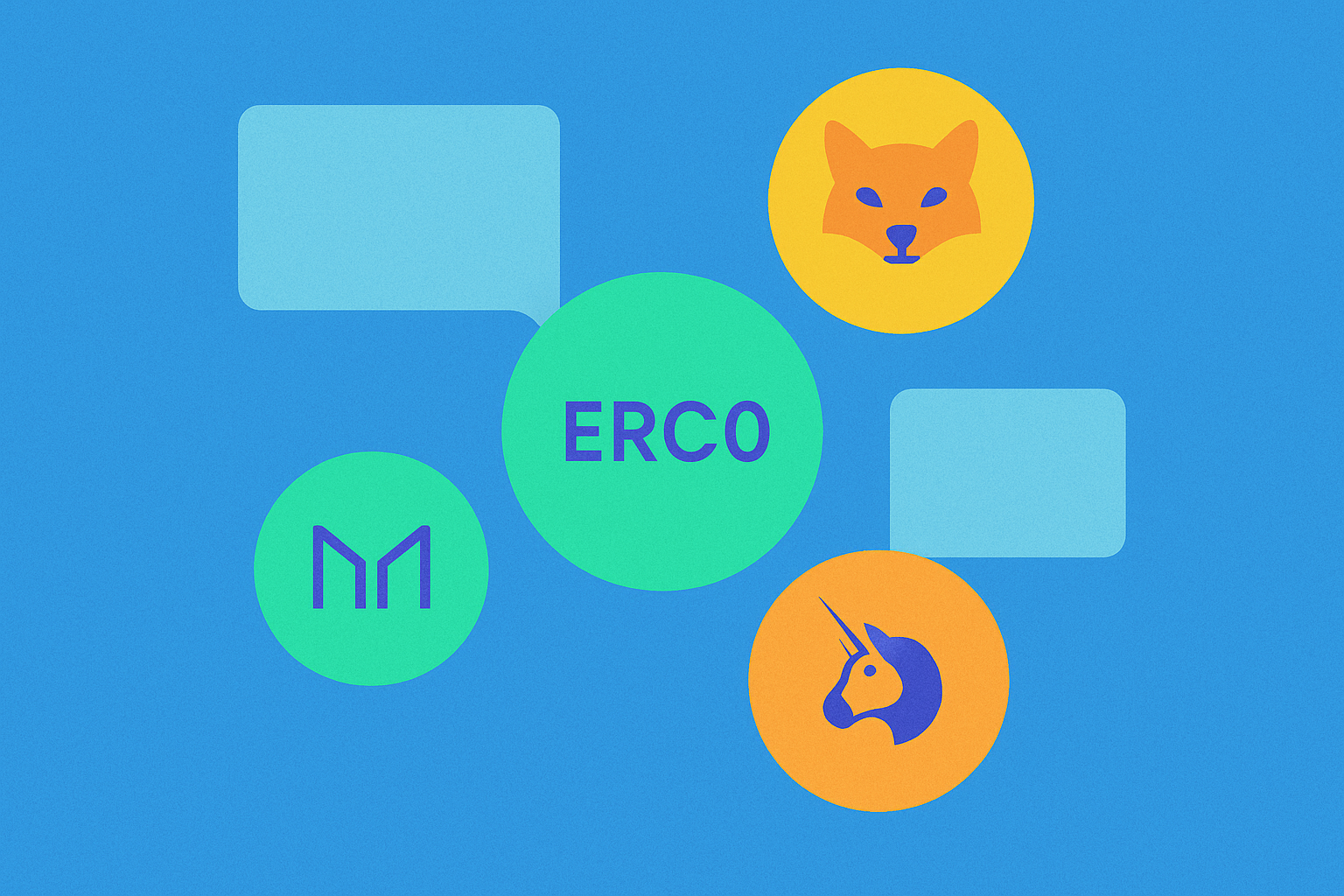ETH on-chain staking: Ethereum pasif gelirini yeniden tanımlamanın nihai rehberi.


Yüksek Kazançlar: ETH staking getirisi %6.5'e kadar çıkabilir.
Ethereum on-chain staking getirileri, yatırımcılar için sıcak bir ilgi konusu haline geldi. Ethereum ağının devam eden gelişimi ve iyileştirmeleri ile, stakingETHSadece ağ güvenliğine katkıda bulunmakla kalmaz, aynı zamanda stake edenler için önemli bir pasif gelir de sağlayabilir. Şu anda, ETH staking için yıllık getiri %6,5'e kadar çıkmaktadır ve bu, geleneksel finansal ürünleri çok aşmaktadır. Bu çekici getiri oranı, birçok yatırımcının dikkatini çekmiştir. Staking getirisinin toplam staking hacmindeki değişikliklerle dalgalandığını belirtmek önemlidir. Resmi Ethereum verilerine göre, Ekim 2025 itibarıyla ağdaki toplam staking hacmi 25 milyon ETH'yi aşmış olup, bu da toplam arzın yaklaşık %20'sini temsil etmektedir. Bu devasa staking ölçeği, yatırımcıların Ethereum'un geleceğine olan güvenini göstermenin yanı sıra ağ için güçlü güvenlik garantileri de sağlamaktadır. Geleneksel banka mevduat faiz oranlarının genellikle %3'ün altında olduğu gerçeğiyle karşılaştırıldığında, ETH staking kesinlikle daha çekici bir yatırım seçeneğidir. Ancak, yatırımcılar kripto para piyasasının volatilitesinin ETH fiyatını etkileyebileceğini, dolayısıyla staking getirilerinin gerçek değerini etkileyebileceğini de kabul etmelidir. Bu nedenle, ETH staking'e katılırken, yatırımcılar risk toleranslarını tam olarak değerlendirmeli ve uzun vadeli tutma konusunda hazırlıklı olmalıdır.
Esnek ve çeşitli: Farklı ihtiyaçları karşılamak için birden fazla staking yöntemi.
Ethereum ekosisteminin gelişimi, yatırımcılara çeşitlendirme fırsatları sunmaktadır.stakeFarklı yatırımcıların ihtiyaçlarını ve risk tercihlerine uyum sağlamak için çözümler. Şu anda piyasada ETH'yi stake etmenin üç ana yolu bulunmaktadır: bağımsız doğrulayıcılar, staking havuzları ve merkezi borsa staking'i. Her yöntemin kendine özgü avantajları ve dikkate alınması gereken noktaları vardır. Aşağıda bu üç staking yönteminin ayrıntılı bir karşılaştırması bulunmaktadır:
| staking yöntemi | Minimum eşik | Teknik Gereksinimler | getiri | Risk | Esneklik |
|---|---|---|---|---|---|
| Bağımsız Doğrulayıcı | 32 ETH | yüksek | En yüksek | Orta | düşük |
| stake havuzu | Genellikle <1 ETH | düşük | Orta | düşük | Orta |
| Merkezi Borsa | Genellikle <1 ETH | son derece düşük | aşağı | Daha yüksek | yüksek |
Bağımsız doğrulayıcılar, operatörlerden yüksek bir teknik beceri seviyesi talep eden 32 ETH'lik minimum bir yatırım gerektirir, ancak aynı zamanda en yüksek getirilere ulaşabilirler. Rocket Pool ve Lido gibi staking havuzları, yatırımcıların daha küçük miktarlarda fonla katılmalarına, daha düşük bir teknik eşik oluşturmalarına ve riskleri çeşitlendirmelerine olanak tanır, bu da onları dengeli bir seçim haline getirir. Merkezi borsa staking'i, kullanıcılara katılmanın en uygun yolunu sunar, ancak saklama riskleriyle karşılaşabilir. Sektördeki önde gelen ticaret platformu olarak Gate, kullanıcıların teknik sorunlar konusunda endişelenmeden staking ödüllerinin tadını çıkarabilmesi için güvenli ve güvenilir ETH staking hizmetleri sunar. Seçilen yöntem ne olursa olsun, yatırımcılar her birinin artılarını ve eksilerini tam olarak anlamalı ve ihtiyaçlarına en uygun staking stratejisini seçmelidir.
Risk kontrol edilebilir: Gate gibi büyük platformlar destek sağlar.
ETH staking'e katılırken, güvenlik her zaman yatırımcılar için en önemli konudur. Staking'in kendisi nispeten güvenli bir katılım yolu olarak tasarlanmış olsa da, ağ saldırıları, teknik arızalar veya piyasa dalgalanmaları gibi bazı potansiyel riskler hala mevcuttur. Bu riskleri en aza indirmek için güvenilir bir staking platformu seçmek çok önemlidir.GateSektörde tanınmış bir kripto para ticaret platformu olarak Gate, ETH staking hizmetlerine önemli kaynaklar yatırmıştır ve kullanıcılara kapsamlı güvenlik garantileri sunmaktadır. Gate, çeşitli güvenlik tehditlerini etkili bir şekilde önlemek için sıcak ve soğuk cüzdan depolama ayrımı, çoklu imza mekanizmaları ve 7/24 güvenlik izleme sistemi gibi birden fazla güvenlik önlemi uygulamaktadır. Ayrıca, Gate kullanıcılara farklı süreler ve farklı getiriler sunan esnek ETH staking seçenekleri sunmaktadır ve bu sayede farklı yatırımcıların ihtiyaçlarını karşılamaktadır. Platformun akıllı sözleşmeleri, fon güvenliğini sağlamak için birden fazla denetimden geçirilmiştir. Bu arada, Gate'in profesyonel ekibi Ethereum ağındaki en son gelişmeleri sürekli izleyerek, kullanıcılar için en iyi getirileri güvence altına almak amacıyla staking stratejilerini zamanında ayarlamaktadır. Bu önlemler, yatırımcıların ETH staking'e güvenle katılmalarını ve getiri büyümesine odaklanmalarını sağlayan güvenli ve güvenilir bir staking ortamı oluşturmaktadır.
Gelecek umut verici: ETH staking ekosistemi gelişmeye ve büyümeye devam ediyor.
Ethereum staking ekosisteminin gelecekteki gelişim beklentileri oldukça geniştir. Birçok teknolojik yükseltme ve piyasa trendi, ETH staking'in güçlü bir büyüme ivmesini sürdüreceğini göstermektedir. Öncelikle, Ethereum ağının sürekli optimizasyonu, parçalama teknolojisinin tanıtımı gibi, ağ performansını ve ölçeklenebilirliğini önemli ölçüde artıracak ve daha fazla kullanıcının staking'e katılmaları için koşullar yaratacaktır. İkincisi, kurumsal yatırımcıların sürekli girişiyle, ETH staking piyasasının boyutunun daha da genişlemesi beklenmektedir. Blockchain veri analitik şirketi Glassnode'un raporuna göre, kurumsal düzeyde staking hizmeti sağlayıcılarının piyasa payının 2024'te %30'dan 2025'te %45'e çıkması öngörülmektedir; bu da profesyonel yatırımcıların ETH staking'e olan güveninin arttığını göstermektedir. Ayrıca, merkeziyetsiz finans (DeFi) ekosistemindeki yenilikler de ETH staking için yeni fırsatlar sunmaktadır. Örneğin, likit staking türevlerinin (örneğin stETH) popülaritesi, stake edenlerin varlık likiditesini korurken staking ödülleri kazanmalarına olanak tanımakta ve staking'in çekiciliğini daha da artırmaktadır. Gate platformunun bu yeniliklere aktif bir şekilde kucak açtığını ve kullanıcılarına çeşitli staking seçenekleri sunmak için ETH staking ürün yelpazesini sürekli optimize ettiğini belirtmek gerekir. Ethereum ekosistemi geliştikçe ve iyileştikçe, ETH staking sadece ağ güvenliğine katkıda bulunmakla kalmayacak, aynı zamanda yatırımcılar için daha fazla değer yaratma fırsatları sağlayarak kripto ekonomisinin vazgeçilmez bir parçası haline gelecektir.

2025'te ETH Staking: Zincir Üstü Seçenekler ve En İyi Platformlar

ETH'nizi maksimize edin: Gate'in on-chain Staking'i 2025'te %5.82 yıllık getirisi sunuyor.

ETH on-chain staking'e Tam Kılavuz: Yüksek Getirili Mining ve Uzun Vadeli Değer Analizi

ETH on-chain staking: Ethereum'da pasif gelir için düşük eşik esnek çözümleri yeniden tanımlamak

ETH Mining ve Zincir İçi Staking: Getiri Karşılaştırması ve Risk Dengesi Stratejilerinin Analizi

ETH Staking Rehberi: Getiriler, Riskler ve En İyi Uygulamalar

NFT Nadirliği Hakkında Bilgi: Nadirlik Skorları Nasıl Hesaplanır

Testnet ortamında, kolayca erişilebilen musluk ile ücretsiz MATIC token talep edin

Blockchain Düğümlerinin İşleyişini Anlamak

Flash Kredileri Anlamak: DeFi'de Teminatsız Borçlanma Üzerine Kapsamlı Bir Rehber

MetaMask ile ERC20 Token Yönetimi: Bir Rehber





